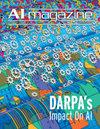低位宽强非均匀量化机器人吸尘器的高性能轻量级AI模型
IF 2.5
4区 计算机科学
Q3 COMPUTER SCIENCE, ARTIFICIAL INTELLIGENCE
引用次数: 1
摘要
人工智能(AI)在机器人吸尘器的操作中起着至关重要的作用,使它们能够智能地导航,清洁和避开室内障碍物。由于有限的计算资源,制造商必须平衡性能和成本。这就需要开发能够实现高性能的轻量级AI模型。传统的均匀权重量化为所有权重分配相同数量的级别,而不考虑它们的分布或重要性。因此,这种适应性的缺乏可能导致次优量化结果,因为量化级别与权重的统计属性不一致。为了解决这一挑战,在这项工作中,我们提出了一种称为低位宽强非均匀量化的新技术,该技术在保持高精度的同时大大减少了人工智能模型的内存占用。我们提出的非均匀量化方法,与传统的均匀量化方法相反,旨在与训练良好的神经网络模型的实际权重分布保持一致。提出的量化方案建立在对人工智能模型中权重分布特征的观察基础上,旨在利用这一知识来提高神经网络实现的效率。此外,我们调整输入图像的大小,以减少人工智能模型的计算和内存需求。目标是确定合适的图像大小及其相应的人工智能模型,这些模型可以用于资源受限的机器人吸尘器,同时在对象分类任务上仍然达到可接受的精度。实验结果表明,与文献中最先进的人工智能模型相比,所提出的人工智能模型的内存使用减少了2倍,从15.51 MB降至7.68 MB,同时保持了93%左右的相同准确率。此外,本文提出的非均匀量化模型将内存使用减少了20倍(从15.51 MB下降到0.78 MB),准确率下降了3.11%(分类准确率仍在90%以上)。因此,我们提出的高性能轻量级AI模型在机器人吸尘器的模型复杂性、分类精度和计算资源之间取得了很好的平衡。本文章由计算机程序翻译,如有差异,请以英文原文为准。
High-Performance and Lightweight AI Model for Robot Vacuum Cleaners with Low Bitwidth Strong Non-Uniform Quantization
Artificial intelligence (AI) plays a critical role in the operation of robot vacuum cleaners, enabling them to intelligently navigate to clean and avoid indoor obstacles. Due to limited computational resources, manufacturers must balance performance and cost. This necessitates the development of lightweight AI models that can achieve high performance. Traditional uniform weight quantization assigns the same number of levels to all weights, regardless of their distribution or importance. Consequently, this lack of adaptability may lead to sub-optimal quantization results, as the quantization levels do not align with the statistical properties of the weights. To address this challenge, in this work, we propose a new technique called low bitwidth strong non-uniform quantization, which largely reduces the memory footprint of AI models while maintaining high accuracy. Our proposed non-uniform quantization method, as opposed to traditional uniform quantization, aims to align with the actual weight distribution of well-trained neural network models. The proposed quantization scheme builds upon the observation of weight distribution characteristics in AI models and aims to leverage this knowledge to enhance the efficiency of neural network implementations. Additionally, we adjust the input image size to reduce the computational and memory demands of AI models. The goal is to identify an appropriate image size and its corresponding AI models that can be used in resource-constrained robot vacuum cleaners while still achieving acceptable accuracy on the object classification task. Experimental results indicate that when compared to the state-of-the-art AI models in the literature, the proposed AI model achieves a 2-fold decrease in memory usage from 15.51 MB down to 7.68 MB while maintaining the same accuracy of around 93%. In addition, the proposed non-uniform quantization model reduces memory usage by 20 times (from 15.51 MB down to 0.78 MB) with a slight accuracy drop of 3.11% (the classification accuracy is still above 90%). Thus, our proposed high-performance and lightweight AI model strikes an excellent balance between model complexity, classification accuracy, and computational resources for robot vacuum cleaners.
求助全文
通过发布文献求助,成功后即可免费获取论文全文。
去求助
来源期刊

Ai Magazine
工程技术-计算机:人工智能
CiteScore
3.90
自引率
11.10%
发文量
61
审稿时长
>12 weeks
期刊介绍:
AI Magazine publishes original articles that are reasonably self-contained and aimed at a broad spectrum of the AI community. Technical content should be kept to a minimum. In general, the magazine does not publish articles that have been published elsewhere in whole or in part. The magazine welcomes the contribution of articles on the theory and practice of AI as well as general survey articles, tutorial articles on timely topics, conference or symposia or workshop reports, and timely columns on topics of interest to AI scientists.
 求助内容:
求助内容: 应助结果提醒方式:
应助结果提醒方式:


